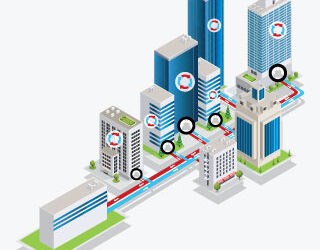Electric mobility to play a key role in India’s energy transition

The number of electric vehicles (EVs) has significantly increased globally over the past decade, and it is expected to grow considerably in the next five years. As per the ARK Investment Management LLC 2020 forecast, EV sales will reach 37 million units by 2024. This rise in the number of EVs globally is primarily attributed to reduced battery cost and government support through favourable policies.
India’s electric mobility industry is expected to grow at par with the world’s advanced EV markets. It is projected that by 2025, around four million electric 2 and 3-wheelers will be sold in India. This will increase the overall electricity demand and will necessitate careful planning of the grid infrastructure. Depending on the operational preferences, different EV segments will use different charging technologies. Their operational preferences will also determine the time at which the vehicles will be charged. This will have a direct impact on planning the load by distribution companies (DISCOMs). With a significant increase in the percentage of renewable energy (RE), penetration into the electrical grid and the challenge of managing the demand from EVs will become a critical task for DISCOMs in future.
India’s transportation sector contributes an estimated 142 Million Tonnes of CO2 emissions annually, of which a major share of the emissions is contributed by the road transport segment alone (Bureau of Energy Efficiency, 2020). EVs have a very low level of tailpipe emissions of local air pollutants. Thus, faster adoption of EVs can play a significant role in bringing down the percentage of emissions contributed by the transportation sector, which can ameliorate the extremely poor air quality situation prevailing in many north Indian cities.
Alliance for an Energy Efficient Economy (AEEE) believes for electric mobility to play a key role in India’s energy transition for a climate-resilient and energy secure future. The Power Utility and Electric Mobility (PU&EM) vertical at AEEE, with support from Shakti Sustainable Energy Foundation, is thus contributing towards AEEE’s mission to enable sustainable energy transition by working across the industry and with the government and civil society. AEEE in the past has developed frameworks to identify suitable locations to deploy charging facilities for electric 2, 3, 4-wheelers and electric buses. One of the recent works in this area was developing a framework for determining appropriate tariffs for EV charging in India. The researchers at AEEE have also recognised the need to investigate potential grid services from EVs, including their technical and economic aspects, and the regulatory reforms required to implement these services. For this, the PU&EM vertical has developed a roadmap for Vehicle Grid Integration (VGI) implementation in the country.
The work in electric mobility contributes directly towards AEEE’s mission to accelerate impact as a policy enabler through thought leadership and research to meet India’s 2030 Nationally Determined Contribution (NDCs) and Sustainable Development Goals (SDGs).

Written by Satish Kumar, President and Executive Director, AEEE




